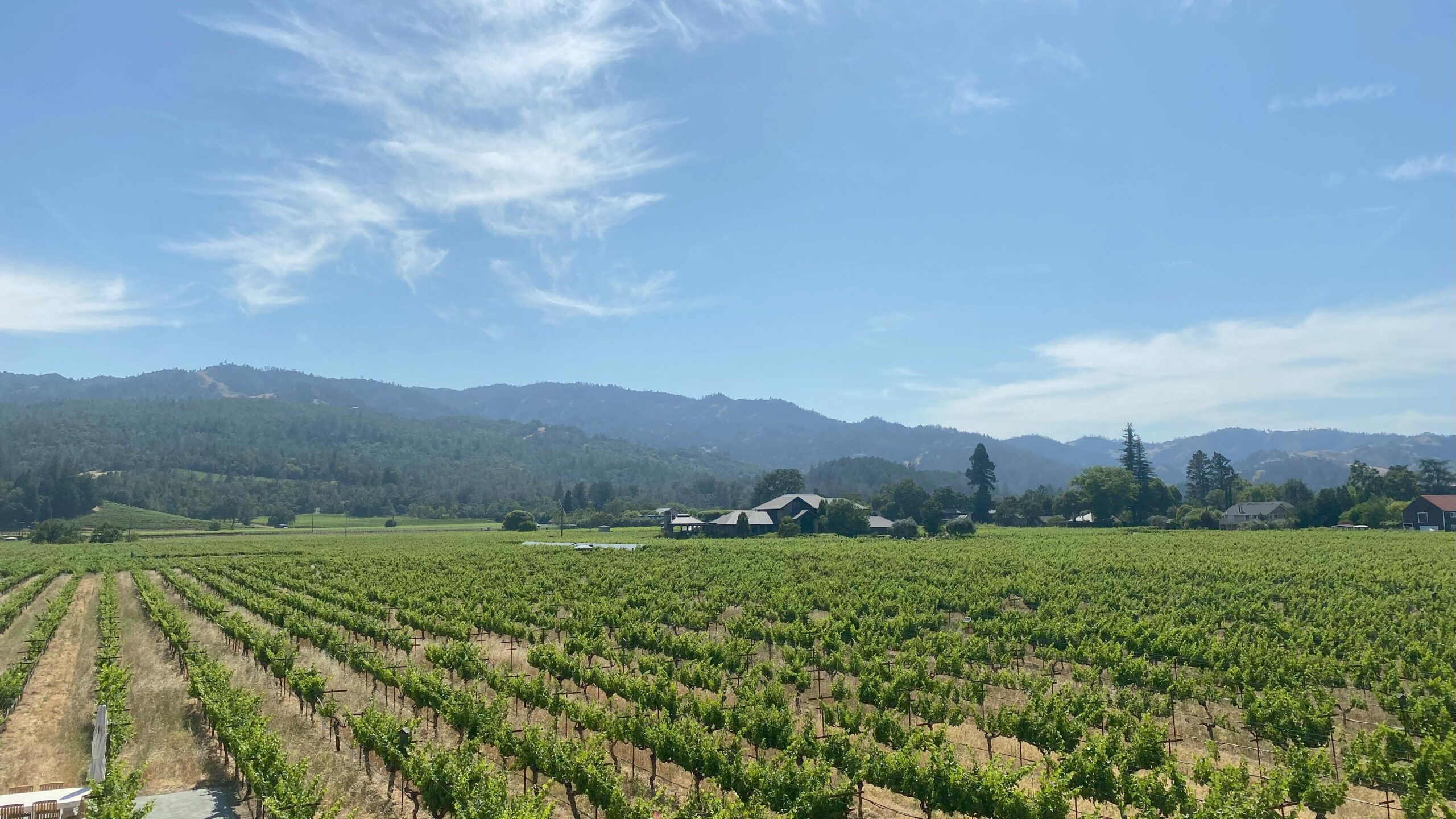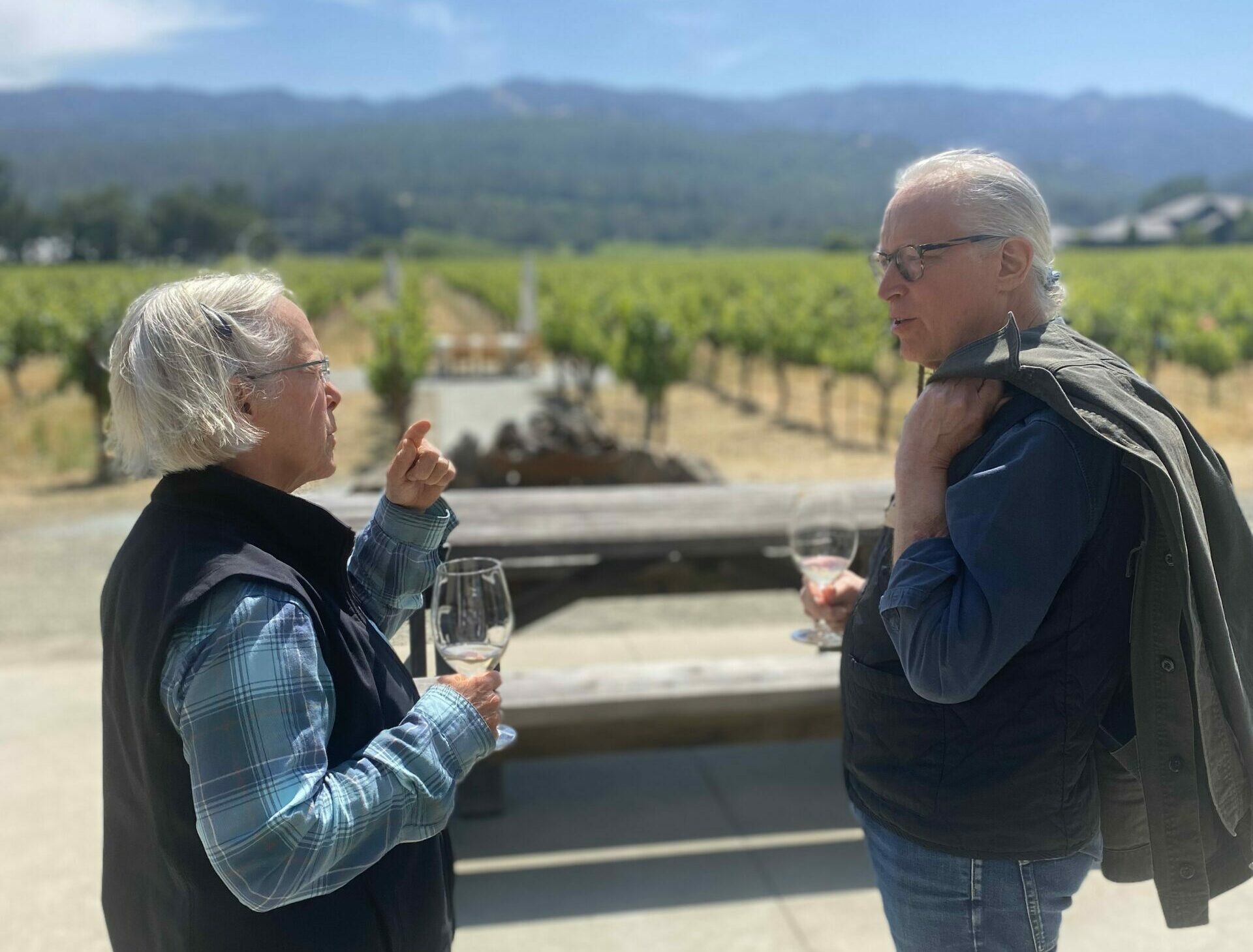Wines of Style, Wines of Place: A Discussion with Cathy Corison and Eric Asimov
Cathy Corison was the first woman winemaker-proprietor in the Napa Valley. She received her B.A. in Biology from Pomona College in Claremont, CA, followed by a master’s degree in Enology from University of California at Davis. Her first winemaking position was at Yverdon Vineyard and Winery on Spring Mountain followed by Chappellet Winery. Later, she held winemaking positions at Staglin Family Winery, Long Meadow Ranch, and York Creek Vineyards. After buying Kronos Vineyard in 1995, Cathy and her husband, William Martin, opened Corison Winery in 1999.
In June 2023, as part of Areni Live California, a small group visited Cathy Corison at Corison Winery to discuss the concepts of style and place in the context of fine wine. The below conversation is a lightly edited transcript of the conversation led by New York Times wine critic Eric Asimov, extracted from an hour-long discussion with Cathy Corison.
Eric Asimov
The name of this seminar is Wines of Style, Wines of Place. How you distinguish between the two?
Cathy Corison
I don’t think they’re polar. Like everything else in the world, there’s a lot of grey in between.
I believe that the great wines of the world should be both. They should be wines of style, and they should be wines of place. Wine is one of the only things in the world that can do this amazing thing. It can speak of time and place, and then it can go forward into time speaking of time and place. So to not take advantage of that is odd to me. Great vineyards make great wine, period. And I look at my job as being to let the vineyards speak.
But I do also think that these are wines of style. This style was in my head before we ever owned the vineyard. So I came to bale gravelly loam (Ed: one of Napa’s most recognised soil types) to do this style. So what comes first? It’s a continuum or a spectrum.
What if I had this vineyard and I wanted to make a different style? Say I didn’t want this much acidity. These wines are more acidic than many Napa Cabernets. What if I decided I needed to pick later to get the acid lower? And so they’d be riper, and they’d be higher in alcohol, but they could still speak of place ― where they grew.
Take that to an extreme. I believe if you get Cabernet too ripe, you lose all the beautiful red, blue, purple, black Cabernet fruit flavors, and you just get prunes. When grapes get that ripe, you can’t tell what variety it is; you can’t tell where it came from. So that’s one extreme for me, but I don’t agree with the binary question, as though you either make a wine of style, or you make a wine of place.
Eric Asimov
Are you saying that the human factor is very much a part of terroir?
Cathy Corison
I never understood the term ‘terroir’. In fact, we were told at Davis 45 years ago that the term was meaningless. It’s not at all. It’s everything. Where the grapes grow is everything. Anything that grows in the soil can speak of place.
I never understood the term until I understood the human component of terroir in Europe. There are families that go back five, seven generations, and they’re part of the terroir, no question. All the choices we make out here [in the vineyard] are very much expressed in the glass.
Eric Asimov
In Europe, in a place like Burgundy for example, people have been growing grapes and making wine for centuries and pretty much decided at one point or another that Pinot Noir and Chardonnay would be the predominant varieties. Would you call that a cultural imperative?
Cathy Corison
No, I think it’s real. They had to figure it out. This happened here too. When I got to the Napa Valley, there was Riesling in Calistoga and Cabernet in Carneros. And it wasn’t until we learned a lot and we knew it is so expensive to replant vineyards that things weren’t shifting much. Even though we knew that a lot of things weren’t in the right place, phylloxera allowed us to shift. And I think it’s clear that the Napa Valley can make Cabernets well or better than any place in the world. We can grow lots of other things, but Cabernet I don’t think can be bettered anywhere. So what else would you grow here? I mean, people will say, well, why do you make Cabernet? Well, I’m in Napa, what else would I do?
Eric Asimov
And eventually in France, it gets codified by the government. But that’s not the way it happened here. It is much more subjected to entrepreneurship and commercial considerations and whatever an individual’s vision is. But you are saying that the Napa community, by observing, has largely decided that Cabernet is what’s best, at least in this part of the valley.
Cathy Corison
And from a, a financial business standpoint, we can get a lot more for bottled wine. I saw people mourning the loss of Chenin Blanc. That was, in fact, one of my favourite things up to do at Chappellet. And it was growing up above the chalet’s house on a cliff, and it was old vine, and it was just amazing stuff. It’s long gone. And yes, that makes me really sad, but back in the day, we couldn’t get more than $17 a bottle for it. So I think there’s an economic comparative too that’s pushed people toward Cabernet.

Eric Asimov
And that’s slightly different from the cultural or aesthetic.
Cathy Corison
But because it’s so good, Napa Cabernet can demand a good price. And so what else? In a way, from just a business standpoint, it’s hard to justify. But we’ve lost so many varieties. There was Riesling all over the place. I had Riesling growing up on Pritchard Hill when I was making the wine there. It wasn’t the best place to grow it, but it made pretty good Riesling. So I miss that diversity, for sure.
Eric Asimov
So all these elements go into making a wine of place: the human factor, soils, climate. Are there other elements as well?
Cathy Corison
Oh, I think that’s what’s expressed in the glass. Everything in this glass came from the earth or the sky ― literally! ― and a living organism turned it into wine.
Eric Asimov
And do these elements have to be in some sort of balance?
Cathy Corison
I believe that when grapes get too ripe, they no longer speak of either their variety or their place. I think my role is to let these vineyards speak, and over ripeness mutes everything.
Eric Asimov
Where did your vision of what the Cabernet from this area should be come from?
Cathy Corison
Well, I love the wines of the world. Back in the day it was all French. So I cut my teeth on French wines and European wines in general. And I think that’s always informed my style for sure. Now it’s the wines of the world that have a life force. It doesn’t have to be Cabernet. It can be Mosel wine, Champagne, rosé. It can be Saint Julien or Chianti Reserva. My favourite wines in the world all something in common. There’s this energy and acidity and age worthiness and table worthiness. These wines have really bright natural acidity. The pH is low, the acid is high, there’s a brightness.
And as much as I admire the great Cabernet vineyards in the hills, they’re not built that way.
[Here in the valley] I love the tannins, I love the range of flavours, everything from red to blue to purple to black. So cherries to blueberries, to plums, to boysenberries, to blackberries. And in a good vintage, all of those can be in the same glass at the same time down here. That’s really not true up there (in the hills). The flavours tend more to purple and black up there. That’s not a bad thing, but it just wasn’t what I was looking for.
We are grateful to Cathy Corison for her hospitality and insights. This article is the first in a series of Q&As with leading minds from the California wine industry. Subscribe to our newsletter to receive news of the next in the series. And for more conversations and analysis on the topic of style, place and terroir, you can explore the resources below:

